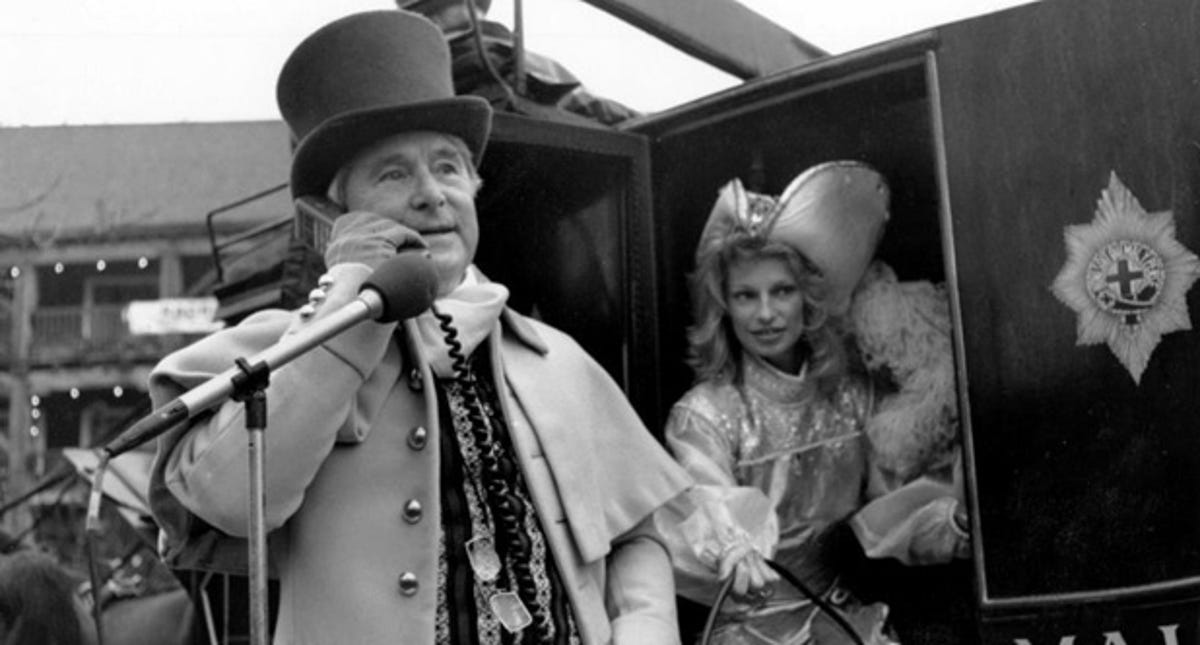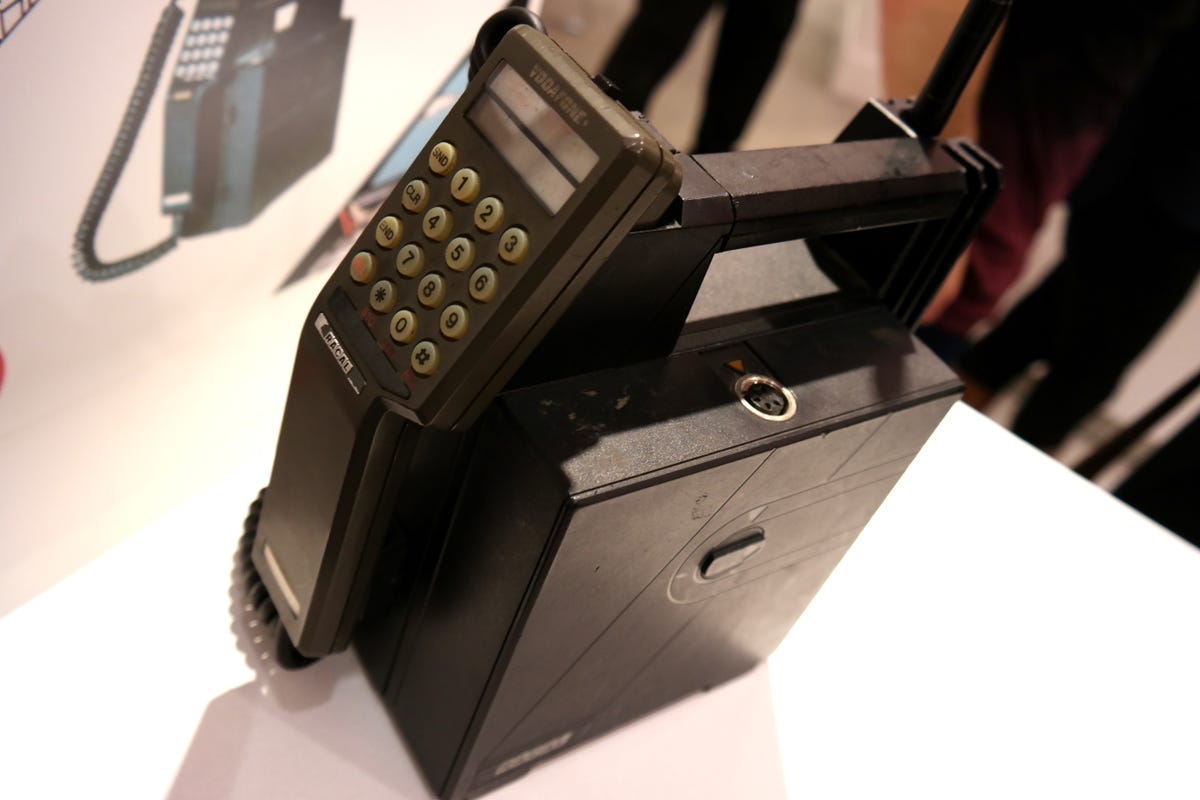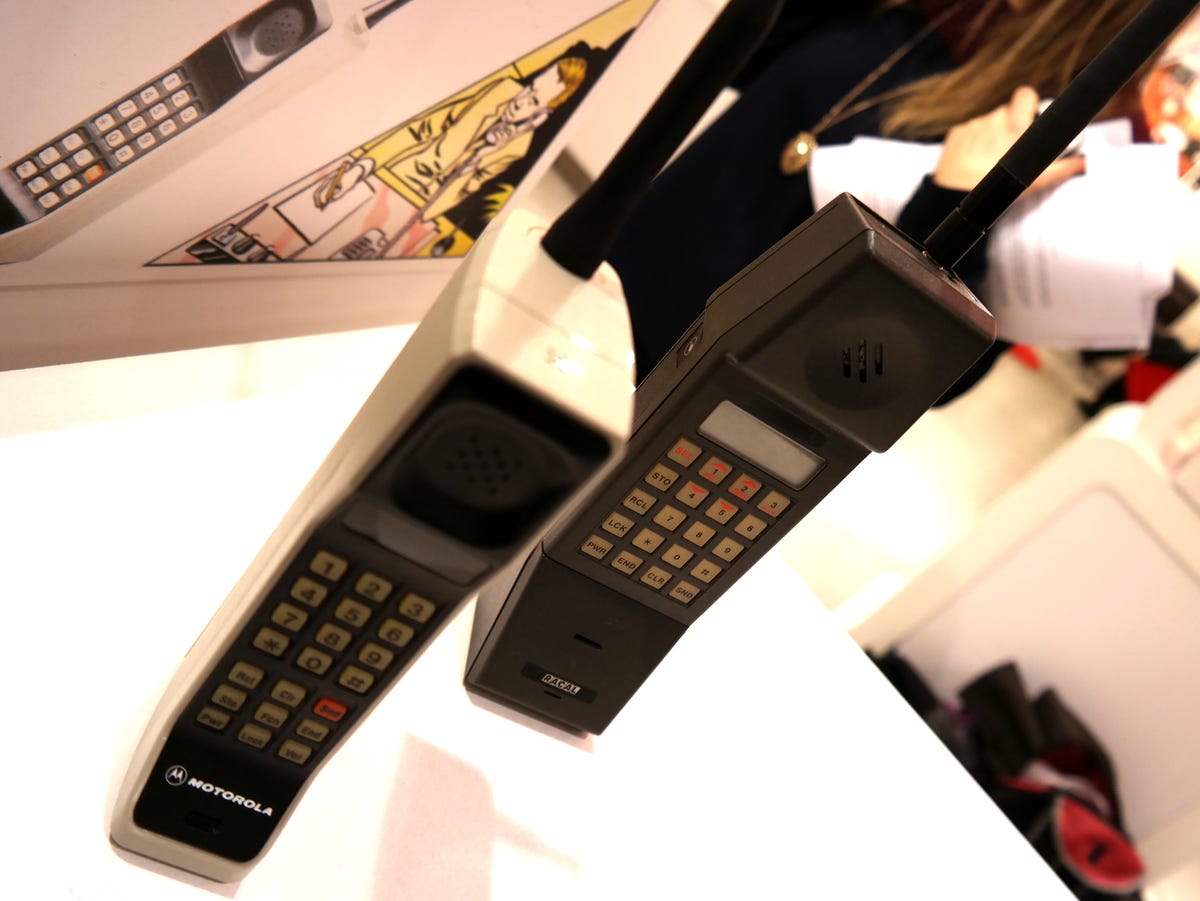
Vodafone
Band Aid’s “Do They Know It’s Christmas?” was at number one, Colin Baker was Doctor Who, and “Beverly Hills Cop” was in cinemas. But as 1984 ticked into 1985, 1 January ushered in more than just a new year: it was the start of a new era, as the first mobile-phone call in the UK was made that very day 30 years ago.
Britain’s first official call on a mobile (following a beta test in London) was made on 1 January 1985 by 24-year-old Michael Harrison, son of Vodafone chairman Sir Ernest Harrison. Michael slipped out of the family New Year’s Eve party in Surrey and drove to Parliament Square in Westminster with a Vodafone Transportable VT1 phone, also known as Nokia’s Mobira Talkman. After Big Ben had struck 12 to ring in the new year, Harrison junior dialed home and greeted his father, “Hi Dad, it’s Mike. Happy New Year. This is the first ever call on a UK mobile network.”
Dawn of a new era
Vodafone was first to go mobile with the New Year’s Eve call, but the head start was brief: BT Cellnet — the forerunner of today’s O2 — launched its service just days later on 10 January 1985. Entertainer Ernie Wise, best known for his double act with Eric Morecambe, promoted the network a couple of weeks later with a photo-call at London’s St Katharine Docks during which he also dialed chairman Harrison, giving rise to the popular belief it was Little Ern who made the first mobile call.


Vodafone
It was another eight years before anyone else got involved, when digital networks Mercury One2One and Orange launched in 1993 and 1994. One2One became T-Mobile in 2002, and the two networks merged under the banner of EE in 2009. Mobile carrier Three joined in the fun in 2002 when the country switched to Internet-friendly 3G. Smartphones took the mobile phone to new popularity, and in 2011 the volume of calls made from mobile overtook landlines for the first time.
The first mobiles had gone on sale in the US in 1983, a decade after the first mobile-telephone call in the world was made on 3 April 1973 by Motorola’s Martin Cooper. Standing outside the New York Hilton, Cooper used a Motorola DynaTAC to call the head of research at rival Bell Labs to let him know Bell had just lost the race.
13 phones that changed the world






Chunky phones like the VT1 and VM1 followed, but the mobile phone as we know it began to take shape with the now-iconic Motorola 8000X, the quintessential Gordon Gekko-endorsed 1980s brick phone.
And the change was huge. One of the earliest users in the UK was John Fava, who took part in the beta test in December 1984. “In those days, although car phones existed they were horrendously expensive and went in the back of a Roller,” Fava said. “But here was a Ford Sierra with a mobile phone and the ability to call anywhere in the world! It soon changed our working life.”
First in line
The first customer was investment banker Mungo Park. “I had a family friend, Ivon Donn, who became a [mobile phone] salesman,” Park remembers. “He called me and said ‘I got the job, I got the job…do you want to buy a phone?'”
Being the first customer had one unexpected perk: Park never actually paid for the phone. “We filled in the form, but the form and the cheque were used at presentations and conferences and the induction courses for new salesmen — so they never banked the cheque!”


Vodafone
Park owned the VM1, a popular early model for businessmen on the go because it was installed in a car. It cost £1,471. “The big thing went in the boot,” Park remembers, “the cradle went under the armrest of the car and the aerial went on the roof. It was aesthetically ugly. You wouldn’t look very cool walking down the street with that.”
The model used to make the very first call, the Transportable VT1, suffered from a bit of a misnomer: it weighed nearly 5kg. When Vodafone’s sales director visited Buckingham Palace to demonstrate the phone, police initially thought it was a bomb.
A life changer
The mobile phone had an instant impact on Mungo Park’s life.”I was working for an American investment bank in London, but because of the time difference, Wall Street didn’t close until 9pm. We had to be fully staffed in our office until 9pm, but we were also dealing with Switzerland, the Netherlands and everything else, which meant we had to be in at 7am. So what it meant was that on the way into the office I could speak to Zurich and speak to Amsterdam, and then at 7 or 8pm. I could actually leave the office and still be in instant contact with New York. When they said somebody wants to do this or that it actually meant we could do the transaction.
“From a straightforward economic point of view it made absolute sense — and for quality of life, because we were working from 7 in the morning to 9 at night every day of the week, which wasn’t much fun. So it was a great business tool and a real life-changer.”


Richard Trenholm/CNET
Another early customer, Roger Southam — who is still a Vodafone customer — also saw a VM1 transform his business. “I was in property, so I spent a lot of time going between sites, right the way up to Liverpool and down to Southampton and across to Bristol.
“We’d drive, we’d go and look at the building and you’d either save up lots of scraps of paper to spend the next day back in the office on the phone, or you’d be clipping how much time you could spend on the road. The efficiency of having the phone gave me an extra day a week basically. It just made life so, so simple. Being mobile was the most extraordinary thing on the planet.”
Not everybody saw the potential, however. “Not many companies leapt in straight away,” remembers Southam. “A lot of companies saw the expenditure rather than the saving. It would get one of two reactions: it would be seen as very efficient, or seen as very flash.”


Richard Trenholm/CNET
It wasn’t just the cost of the hardware that limited the early adoption of mobile phones. “You were paying £1,200 for the phone but also 33p a minute,” remembers Southam. “Change in the tariffs made it more accessible, especially when you started getting the bundling of free phones with a contract. Those two things ran in tandem: the technology has gone down one route in terms of size and your ability to carry it around, but the other side of the coin is how pricing has changed, how packaging has changed and how competition has changed.”
How they built the network
Vodafone began in 1982 as part of Racal Electronics, then one of Britain’s biggest makers of military radio technology. The Vodafone name was chosen to smush together “voice,” “data” and “fone.”
Mike Pinches was Vodafone’s first technical director, responsible for creating the network’s infrastructure from scratch. “I was one of the first five employees,” he remembers. “I was asked by Gerry Whent, who founded the company, to be the technical director from the beginning. I joined on 1 April 1983 and I retired in 2002.”
The first phones used the analogue Total Access Communication System (TACS), which was later replaced in the 1990s by GSM. “The standard was based very heavily on the US AMPS first-generation analogue standard,” recalls Pinches, “with the smallest modifications we were allowed to get away with. That gave us the best chance to get equipment from the manufacturers.”
Right from the start, the clock was ticking. “We had a license obligation to open service before 31 March ’85,” remembers Pinches. “That was the deadline, but we managed to open on 1 January — although we frankly didn’t have all that many phones or all that many customers!”
From brick phones to pocket computers in 40 years (pictures)






The early priority was to make sure the signals reached far and wide. “The whole concept of cellular comms is that to start with, when you haven’t got many customers, you want as much coverage as possible, so you want masts to give you wide area coverage. The more customers you get, the more you need to shrink the cell sites and reuse the same frequency time and time again. Early designs were based on cellular beehive structures, which were hexagonal because you can divide a hexagon into three smaller hexagons inside each other.
“The day we launched, each frequency was used effectively only once in London. Today it’s probably reused 200 times in the London area and that’s what gives you much greater capacity. But to start with we didn’t have a capacity problem, we had a coverage problem. The first part of the site build was getting coverage out up the M1 to Birmingham, extending it in the southeast, getting up to Manchester, and then gradually trying to creep out all over the map.”
BT battles
At the time, the only telecoms network in the UK was British Telecom. Pinches says, “We had a very clear objective: to give BT the fright of their lives.” The two rival networks found themselves in an odd situation, however, as they had to agree on a first-generation standard. “BT were attempting to strangle us at every opportunity, and the first thing we had to do was sit down with them!” remembers Pinches.
It’s good to talk
- The first call from a cell phone was made 40 years ago today
- From brick phones to pocket computers in 40 years (pictures)
- Text messages turn 20 today
- Why my favourite phone of all time is an old Nokia
- Remember your first Nokia? Here’s what it would look like today
First was the small matter of connecting the two networks. BT initially wanted Vodafone to give each customer their own local exchange line. “We said consider us another country overlaid on Britain,” Pinches countered, “and we’d like to interconnect at the international exchange level, which was the opposite extreme. Eventually common sense prevailed and we beat out a method of connection that still works.”
More conflict ensued. “They wanted to approve all of our equipment because BT had that right in those days. I still remember that meeting when they said they wanted to approve our equipment. We gulped a bit, thought for a moment, and said OK, that’s reasonable, and because we are an equivalent licensed public telecoms operator, we have exactly the same status as you — so you won’t have any objection to us approving your equipment at your end. They gulped a bit, and again common sense eventually prevailed.
“Quite a strange relationship we had, but quite effective, and it obviously worked.”
Mast-ers of the universe
The next job was to figure out where to actually put the kit that would carry the mobile signals. “We had to design where we wanted base station sites to put the masts up, negotiate with whoever owned the land or the building, and connect it to our exchanges. Pretty much all our connections were provided by BT, so again for our biggest competitor we were one of their biggest customers, ordering landlines at a huge rate.
Masts were placed on buildings including the Royal Exchange, the Thames Barrier and Crystal Palace, with a freestanding mast in Highgate. Another base station was located at the Royal Lancaster hotel near Hyde Park.
Back in time
“We hired a suite in December 1984 and held a weeklong intensive trial,” remembers Pinches. “We had somewhere around 30 vehicles, each with one of our guys who knew what he was doing and one graduate from the graduate trainee scheme assigned to help them map-read and log what was happening. Each team had a designated area to go and drive around to make and receive calls and see if there were any problems.
“We had a big wash-up meeting just before Christmas, which on the whole at that time looked as if it had gone pretty well. Then the board of directors had a big meeting after Boxing Day to decide what they were going to do next. Gerry sat at the end of the table and said, “It looks like we might be able to launch,” and we went round the table one at a time: “Do you think we should? Do you think we should?” We all said “Yes!” And we took the decision then that we’d try and spring a surprise on BT on 1 January, which they weren’t expecting.”
All was fair in love and war and in the strange relationship between BT and Vodafone. “Because we had a contract obligation to launch by the end of March we’d managed to lull BT into thinking we were going to launch back then sometime,” says Pinches. “It was all a bit hush-hush, we were desperately trying to keep it quiet, hence leaving the decision as late as possible.”
The work done by Mike Pinches and his colleagues at Vodafone and rivals at BT laid the groundwork for the mobile phone revolution. “We knew it was important,” recalls Pinches, but he admits, “I wasn’t thinking 30 years ahead!”
So much has changed between then and now. “Now my MacBook talks to my iPhone, which is magic,” says John Fava, “I couldn’t have envisaged that 30 years ago. What happened in the last 30 years has been so gigantic you couldn’t have predicted — and don’t ask me what’s going to happen in the next 30 years!”



